
Composites Theory and Practice
Scope & Guideline
Pioneering Insights for Tomorrow's Composite Technologies
Introduction
Aims and Scopes
- Composite Material Processing:
Research related to the methods and techniques used in the fabrication and processing of composites, including advanced methods like spark plasma sintering, 3D printing, and autoclave technology. - Mechanical and Structural Analysis:
Investigation into the mechanical properties and structural performance of composites under various loading conditions, including static and dynamic analysis, failure mechanisms, and vibration behavior. - Nanocomposites and Hybrid Materials:
Focus on the development and characterization of nanocomposites and hybrid composites, exploring the effects of nanoparticles and hybrid reinforcements on material properties. - Durability and Environmental Performance:
Studies evaluating the durability, wear, and corrosion resistance of composite materials, including their performance under environmental factors such as UV radiation and moisture. - Innovative Applications:
Exploration of novel applications for composites in various fields, such as aerospace, automotive, and construction, highlighting their benefits over traditional materials.
Trending and Emerging
- Advanced Manufacturing Techniques:
There is a noticeable increase in studies focusing on advanced manufacturing methods such as additive manufacturing and spark plasma sintering, which allow for precise control over material properties and complex geometries. - Multifunctional Composites:
Research on multifunctional composites that serve dual or multiple purposes (e.g., structural integrity combined with thermal or electrical conductivity) is on the rise, reflecting the demand for materials that meet diverse performance criteria. - Smart and Responsive Materials:
Emerging themes include the development of smart composites that can respond to environmental stimuli, integrating sensors and actuators for real-time monitoring and adaptive performance. - Sustainability in Composite Materials:
Increased focus on sustainable practices, including the use of recycled materials and environmentally friendly processing methods, is becoming a significant trend in composite research. - Modeling and Simulation Techniques:
There is a growing interest in computational modeling and simulation approaches to predict the behavior of composite materials under various conditions, enhancing the understanding of their performance.
Declining or Waning
- Natural Fiber Composites:
Research on natural fiber-reinforced composites has seen a decline, possibly due to the growing focus on synthetic materials and advanced composites that offer superior mechanical properties. - Basic Characterization Studies:
There appears to be a waning emphasis on fundamental characterization studies that do not lead to novel applications or advanced material systems, with a shift towards more applied research. - Traditional Polymer Composites:
The exploration of conventional polymer matrix composites has diminished as the field moves towards more complex composite systems, such as those integrating nanomaterials or hybrid reinforcements.
Similar Journals

Epitoanyag-Journal of Silicate Based and Composite Materials
Elevating Knowledge in Composite Materials and SustainabilityEpitoanyag-Journal of Silicate Based and Composite Materials is a premier international journal published by the Scientific Society Silicate Industry-SZTE, focusing on the development and application of silicate and composite materials. With its Open Access policy established in 2013, this journal provides a platform for researchers, professionals, and students to disseminate and access high-quality research without barriers. The journal aims to foster advancements in the field by covering a broad spectrum of topics, including material characterization, innovative applications, and sustainability initiatives related to silicate-based and composite materials. Its commitment to sharing valuable research makes it an essential resource for those looking to stay at the forefront of material science. Located in Budapest, Hungary, the journal not only serves a global audience but also contributes to the ongoing dialogue within the materials science community.
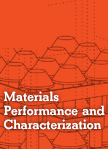
Materials Performance and Characterization
Fostering Excellence in Materials PerformanceMaterials Performance and Characterization is a distinguished journal published by the American Society for Testing and Materials (ASTM), specializing in the field of materials science. With ISSN 2379-1365 and E-ISSN 2165-3992, this journal serves as a pivotal platform for disseminating innovative research in the areas of metals and alloys, polymers and plastics, ceramics and composites, and mechanics of materials. Established in 2012, it continues to feature peer-reviewed articles that contribute to both theoretical advancements and practical applications, emphasizing the importance of materials performance in various industries. Despite its current Q4 and Q3 rankings across categories as of 2023, the journal is committed to enhancing its influence in the materials science community, fostering engagement among researchers, professionals, and students alike. The journal is essential for anyone seeking to stay at the forefront of materials research and characterization.

ADVANCED COMPOSITE MATERIALS
Driving Innovation in Composites and CeramicsADVANCED COMPOSITE MATERIALS, published by Taylor & Francis Ltd, is a leading peer-reviewed journal in the field of materials science, specifically focusing on the innovative development and applications of composite materials. With an ISSN of 0924-3046 and E-ISSN 1568-5519, this journal serves as a vital resource for researchers and professionals worldwide, examining cutting-edge advancements and methodologies in composites, ceramics, and mechanical engineering. Having secured a solid standing in the academic community, it boasts impressive Scopus rankings, such as #185 in Mechanical Engineering with a 72nd percentile and #46 in Ceramics and Composites, emphasizing its relevance and rigor. Although not an open-access publication, its insights are invaluable for those looking to explore, contribute to, and stay abreast of the latest breakthroughs in the field from 1991 through 2024. By targeting critical areas within mechanics and material sciences, the journal continues to foster innovation and scholarly discussion, making it an essential venue for specialists striving to advance the capabilities and applications of composite materials.
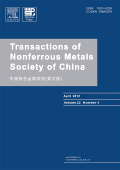
TRANSACTIONS OF NONFERROUS METALS SOCIETY OF CHINA
Fostering excellence in materials science and engineering.TRANSACTIONS OF NONFERROUS METALS SOCIETY OF CHINA, published by Elsevier, is a premier academic journal that serves as a vital platform for researchers and professionals specializing in materials science, condensed matter physics, geotechnical engineering, and engineering geology. Established in 1994, this esteemed publication has maintained a robust focus on the latest developments in the nonferrous metals sector, reflecting its significant impact in the field with a Q1 categorization across multiple disciplines. With impressive Scopus rankings—placing it in the top 20% of journals in relevant categories—this journal is recognized for its quality and rigor, providing critical insights into metals and alloys, materials chemistry, and their applications. The non-open access format ensures a dedicated readership among professionals and academics seeking substantial and authoritative research articles. By fostering knowledge exchange, the journal strives to advance the understanding and application of nonferrous metals, making it an essential resource for anyone involved in material innovations and engineering solutions.
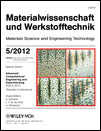
MATERIALWISSENSCHAFT UND WERKSTOFFTECHNIK
Advancing Knowledge in Material Engineering.MATERIALWISSENSCHAFT UND WERKSTOFFTECHNIK, published by WILEY-V C H VERLAG GMBH, is a prominent journal dedicated to the field of materials science and engineering. With its ISSN 0933-5137 and E-ISSN 1521-4052, this journal serves as a vital resource for researchers and professionals engaged in exploring the intricate relationships between the properties of materials and their applications. Established in 1970 and continuing through 2024, the journal has been consistently recognized in various categories, achieving a Q3 ranking in 2023 across Condensed Matter Physics, Materials Science (miscellaneous), Mechanical Engineering, and Mechanics of Materials. Although it does not offer open access, its high-quality peer-reviewed content is fundamental to the advancement of knowledge within its three key areas: novel material development, material characterization, and application of materials in engineering contexts. As a driving force in the scientific community, MATERIALWISSENSCHAFT UND WERKSTOFFTECHNIK continues to cater to the curiosity of aspiring students, seasoned professionals, and researchers alike, facilitating a deeper understanding of the complexities of material technology.

ACS Applied Polymer Materials
Advancing the Future of Polymer ScienceACS Applied Polymer Materials is a prestigious journal published by the American Chemical Society, specifically tailored for the dynamic fields of Organic Chemistry, Polymers and Plastics, and Process Chemistry and Technology. With its ISSN 2637-6105, the journal has rapidly established itself within the academic community, achieving a distinguished Q1 quartile ranking across multiple categories in 2023. This places it among the top-tier journals globally, reinforcing its critical role in disseminating groundbreaking research and innovation in polymer science. The journal is known for its rigorous peer-review process and publishes high-quality articles that are pivotal for researchers, professionals, and students eager to advance knowledge in polymer materials and their applications. Positioned to cover converging themes from 2019 through 2024, ACS Applied Polymer Materials embraces a wide scope of studies, from fundamental chemistry to practical engineering applications, thereby fostering significant advancements in material science. While it offers traditional access options, the journal's impact is reflected in its impressive rankings within Scopus, indicating its relevance and influence in the chemical engineering domain. Join the global community of innovators and discover the latest insights that continue to shape the landscape of applied polymer research.
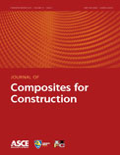
JOURNAL OF COMPOSITES FOR CONSTRUCTION
Leading the Charge in Composite Material AdvancementsThe JOURNAL OF COMPOSITES FOR CONSTRUCTION, published by the American Society of Civil Engineers (ASCE), is a premier scholarly journal dedicated to the advancement of knowledge in the use of composite materials for construction purposes. Since its inception in 1997, the journal has established a strong reputation with an impressive impact, holding a Q1 ranking across multiple categories, including Building and Construction, Ceramics and Composites, and Civil and Structural Engineering. With its broad scope, this journal welcomes innovative research articles that showcase new techniques, applications, and theoretical advancements in composite materials. Although it currently does not offer open access, the journal provides vital insights and rigorous peer-reviewed content, ensuring its relevance to researchers, practitioners, and students pursuing cutting-edge developments in the field. The journal is vital for anyone seeking to stay informed about the latest trends and research in composite materials and their application in the construction industry.
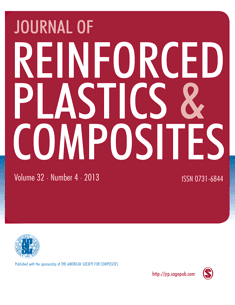
JOURNAL OF REINFORCED PLASTICS AND COMPOSITES
Exploring the Intersection of Engineering and SustainabilityWelcome to the JOURNAL OF REINFORCED PLASTICS AND COMPOSITES, a leading publication in the realms of materials science, engineering, and polymers. Published by SAGE Publications Ltd, this journal stands out with its robust Q2 ranking in multiple categories, including Ceramics and Composites, Materials Chemistry, Mechanical Engineering, and Mechanics of Materials. Since its inception in 1982, the journal has become an essential resource for researchers and professionals, disseminating pioneering research and innovative applications in reinforced plastics and composite materials. Though not open access, subscribers gain exclusive insights into groundbreaking findings contributing to the advancement of the industry. The journal is indexed in Scopus, with notable rankings that reflect its influence and high-quality scholarship. With ongoing coverage until 2024, the JOURNAL OF REINFORCED PLASTICS AND COMPOSITES remains committed to fostering academic dialogues and facilitating advancements in sustainable materials and advanced engineering solutions.

Journal of Polymer & Composites
Fostering Dialogue Between Academia and Industry in Composite Research.Journal of Polymer & Composites, with ISSN 2321-8525 and E-ISSN 2321-2810, is an esteemed academic journal published by STM JOURNALS, dedicated to the advancement of knowledge in the rapidly evolving fields of polymer science and composite materials. The journal serves as a pivotal platform for researchers and professionals, offering cutting-edge research articles, reviews, and case studies that explore innovative developments and applications in polymer chemistry, material science, and engineering. Although currently lacking an impact factor citation, the journal aims to foster dialogue among academia and industry partners, addressing the latest trends and breakthroughs that drive the field forward. With a commitment to scholarly excellence, the Journal of Polymer & Composites is positioned as an essential resource for enhancing the understanding of polymer composites and their multifaceted applications. Notably, STM JOURNALS' reputation for quality publications underscores the journal’s importance in facilitating impactful research and educational initiatives worldwide.

ACI STRUCTURAL JOURNAL
Empowering Professionals with Cutting-Edge Engineering KnowledgeThe ACI Structural Journal, published by the American Concrete Institute, serves as a premier platform for scholarly articles and research findings in the fields of building and construction and civil and structural engineering. With a commitment to advancing concrete technology and its applications, this journal has amassed an impressive reputation, holding a Q2 ranking in both Building and Construction and Civil and Structural Engineering categories as of 2023. The journal’s focus on innovative research and practical applications enables professionals, researchers, and students to stay at the forefront of industry developments. Although it does not offer open access, the content bears significant impact, ensuring that readers engage with high-quality research. As the journal converges its years of publication from 1987 to 2024, it continues to enrich the academic and professional discussions surrounding structural engineering and concrete science.